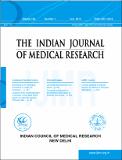Mostrar el registro sencillo del ítem
New approaches & technologies of venomics to meet the challenge of human envenoming by snakebites in India
| dc.creator | Warrell, David A. | |
| dc.creator | Gutiérrez, José María | |
| dc.creator | Calvete Chornet, Juan José | |
| dc.creator | Williams, David J. | |
| dc.date.accessioned | 2017-06-12T15:10:43Z | |
| dc.date.available | 2017-06-12T15:10:43Z | |
| dc.date.issued | 2013-07 | |
| dc.identifier.citation | http://www.ijmr.org.in/article.asp?issn=0971-5916;year=2013;volume=138;issue=1;spage=38;epage=59;aulast=Warrell | |
| dc.identifier.issn | 0971-5916 | |
| dc.identifier.uri | https://hdl.handle.net/10669/30089 | |
| dc.description.abstract | The direct estimate of 46,000 snakebite deaths in India in 2005 (1 for every 2 HIV/AIDS deaths), based on verbal autopsies, renders unrealistic the total of only 47,000 snakebite deaths in the whole world in 2010, obtained indirectly as part of the "Global Burden of Disease 2010" study. Persistent underestimation of its true morbidity and mortality has made snakebite the most neglected of all the WHO's "neglected tropical diseases", downgrading its public health importance. Strategies to address this neglect should include the improvement of antivenom, the only specific antidote to envenoming. To accommodate increased understanding of geographical intraspecific variation in venom composition and the range of snake species that are medically important in India, the design of antivenoms (choice of venom sources and species coverage) should be reconsidered. Methods of preclinical and clinical testing should be improved. The relatively new science of venomics involves techniques and strategies for assessing the toxin composition of snake venoms directly through proteomics-centred approaches or indirectly via high-throughput venom gland transcriptomics and bioinformatic analysis. Antivenomics is translational venomics: a proteomics-based protocol to quantify the extent of cross-reactivity of antivenoms against homologous and heterologous venoms. These approaches could revolutionize the preclinical assessment of antivenom efficacy, leading to a new generation of antivenoms that are clinically more effective. | es_ES |
| dc.description.sponsorship | Ministerios de Educación y Ciencia and Ciencia é Innovación/[BFU2007-61563]//España | es_ES |
| dc.description.sponsorship | Ministerios de Educación y Ciencia and Ciencia é Innovación/[BFU2010-17373]//España | es_ES |
| dc.description.sponsorship | Consejo Superior de Investigaciones Científicas/[2009CR0021]/CRUSA-CSIC/Costa Rica | es_ES |
| dc.description.sponsorship | Consejo Superior de Investigaciones Científicas/[2007CR0004]/CRUSA-CSIC/Costa Rica | es_ES |
| dc.description.sponsorship | Acciones Integradas/[2006CR0010]//Costa Rica | es_ES |
| dc.description.sponsorship | Programa Iberoamericano de Ciencia y Tecnología para el Desarrollo/[206AC0281]/CYTED/España | es_ES |
| dc.language.iso | en_US | es_ES |
| dc.source | Indian Journal Medical Research; Volumen 138, Número 1. 2013 | es_ES |
| dc.subject | Antivenoms | es_ES |
| dc.subject | Cobra | es_ES |
| dc.subject | Envenoming | es_ES |
| dc.subject | Krait | es_ES |
| dc.subject | Preclinical efficacy | es_ES |
| dc.subject | Russell′s viper | es_ES |
| dc.subject | Snakebite | es_ES |
| dc.subject | Venom | es_ES |
| dc.subject | Venomics | es_ES |
| dc.title | New approaches & technologies of venomics to meet the challenge of human envenoming by snakebites in India | es_ES |
| dc.type | artículo original | |
| dc.description.procedence | UCR::Vicerrectoría de Investigación::Unidades de Investigación::Ciencias de la Salud::Instituto Clodomiro Picado (ICP) | es_ES |
| dc.identifier.pmid | 24056555 |
Ficheros en el ítem
Este ítem aparece en la(s) siguiente(s) colección(ones)
-
Microbiología [1171]


